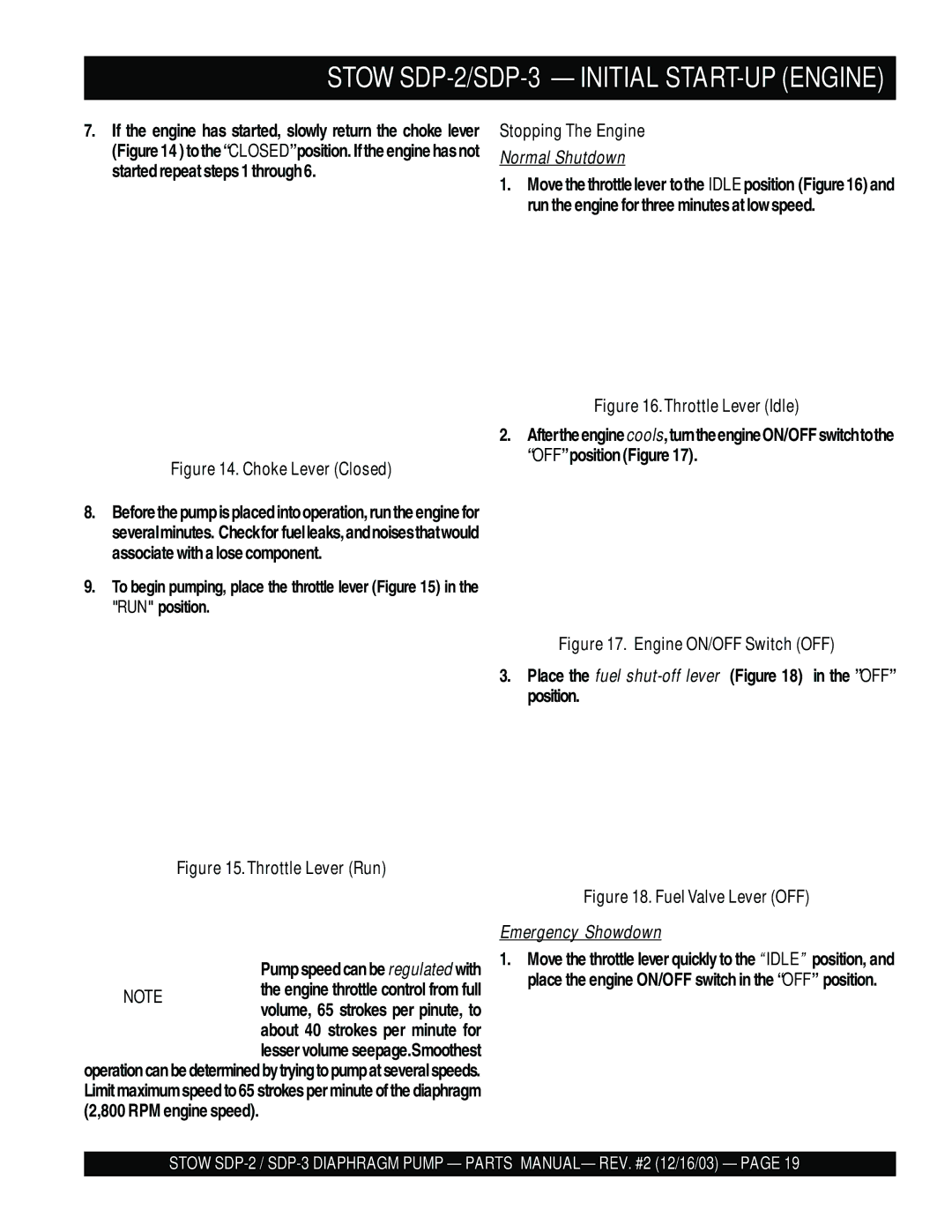SDP-2, SDP-3 specifications
The Stow SDP-3 and SDP-2 are advanced storage and retrieval systems designed to enhance warehouse efficiency and streamline operations. With their state-of-the-art technology and robust features, these systems cater to various industries, from e-commerce to pharmaceuticals, providing reliable handling of goods and optimizing space utilization.The Stow SDP-3 is equipped with a high-density storage solution that maximizes vertical space, allowing for greater storage capacity within the same footprint compared to traditional shelving units. Its modular design can be easily adapted to changing inventory needs, making it an agile choice for businesses looking to scale operations. The SDP-3 can utilize various storage methods, including FIFO (First In, First Out) and LIFO (Last In, First Out), accommodating diverse product types.
On the other hand, the Stow SDP-2 offers similar benefits but focuses on smaller, less intensive operations. It is designed to be lightweight and easy to assemble, making it suitable for businesses just beginning to automate their logistics processes. The SDP-2 integrates seamlessly with existing warehouse management systems, enabling real-time inventory tracking and management.
Both systems leverage advanced technologies, such as automated guided vehicles (AGVs) and robotics, to enhance the picking and storage process. These technologies reduce manual labor costs and minimize the risk of human error, ensuring a more efficient operation overall. Furthermore, the SDP series features integrated safety systems, ensuring that both equipment and personnel can operate in a secure environment.
Key characteristics of the Stow SDP systems include their design adaptability, durability, and low maintenance needs. They are constructed from high-quality materials, ensuring longevity even in high-traffic environments. The systems also allow for easy customization, enabling users to configure the layout and specific components to fit their unique requirements.
In conclusion, the Stow SDP-3 and SDP-2 stand out as top choices for modern warehouse solutions. Their combination of space efficiency, ease of use, and advanced technologies makes them invaluable for businesses aiming to enhance their operational capabilities while reducing costs. As automated solutions continue to evolve, the SDP series remains at the forefront of warehouse innovation.

